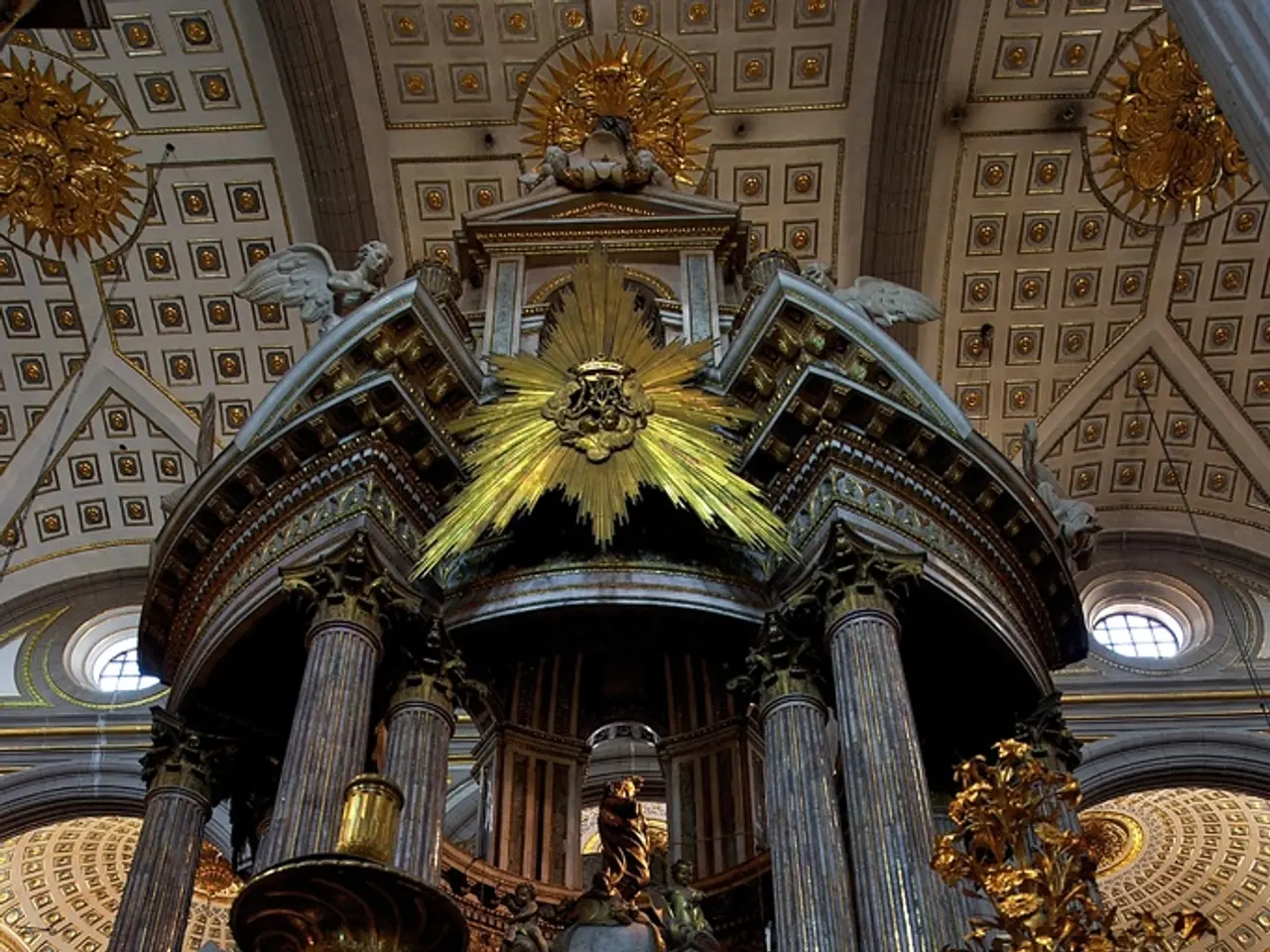Dead tier structure within Napoli's Catacombs
In the heart of Naples, Italy, lies a hidden treasure trove of history - the Catacombs of Napoli. Comprising the Catacombs of San Gennaro and San Gaudioso, these underground burial sites date back to the 2nd and 4th centuries respectively, resting beneath the Basilica of Santa Maria della Sanita'.
The Catacombs offer a fascinating glimpse into the lives of the ancient Neapolitans, revealing their beliefs, social hierarchy, and even their fashion sense. The rich were buried in style, with their skulls encrusted in the walls or their skeletons painted as frescoes. In some private arcosolia, peacocks, doves, quality clothing, and ornaments were depicted, symbolising their wealth and status.
Contrastingly, the poor were buried in the ground or in specially cut niches in the walls. Despite their humble burials, they were not forgotten. Intricate frescoes and mosaics, dating from the 2nd century to Byzantine paintings of the 9th and 10th centuries, adorn the Catacombs, creating a breathtaking tapestry of art and history.
The draining ritual for nobles and clergy in the Catacombs involved a unique process. The newly dead were lowered through a trap door in the ceiling, their cadaveric fluids drained, and then set in a niche called seditoi. This duty was often entrusted to the schiattamuorto, an undertaker who was often a prisoner or a monk given as punishment.
The Catacombs of Napoli have recently been accessible thanks to the efforts of the La Paranza Cooperativa, a social cooperative inspired by Don Antonio Loffredo. This cooperative, initiated by Gennaro Salemme, has not only restored the Catacombs but also the restored churches in Rione Sanità, Naples.
The La Paranza Cooperativa's restoration efforts extend beyond the Catacombs. In collaboration with sculptor Jago, an exhibition was created in the Chiesa di Sant'Aspreno ai Crociferi. Meanwhile, painters were commissioned to create giant blue mural paintings in the Chiesa di Santa Maria Maddalena ai Cristallini, celebrating the local community.
Even in death, the elite tried to maintain their social hierarchy. The rich had individual corners with decorated arching vaults above their resting places, called arcosolia, while the poor shared multi-stack resting places hewn into the walls.
The Basilica of Santa Maria della Sanita', where the Catacombs lie, was the focus of Don Antonio Loffredo's movement to engage youth and rejuvenate the Sanita' region of Naples. By restoring past cultural heritage and creating new local cultural heritage, Loffredo aimed to breathe new life into the area.
Today, the Catacombs of Napoli stand as a testament to the city's rich history, offering visitors a unique glimpse into the lives of its ancient inhabitants. From the elaborate burials of the rich to the humble burials of the poor, the Catacombs tell a story of a city and its people, frozen in time yet vibrant with history.








